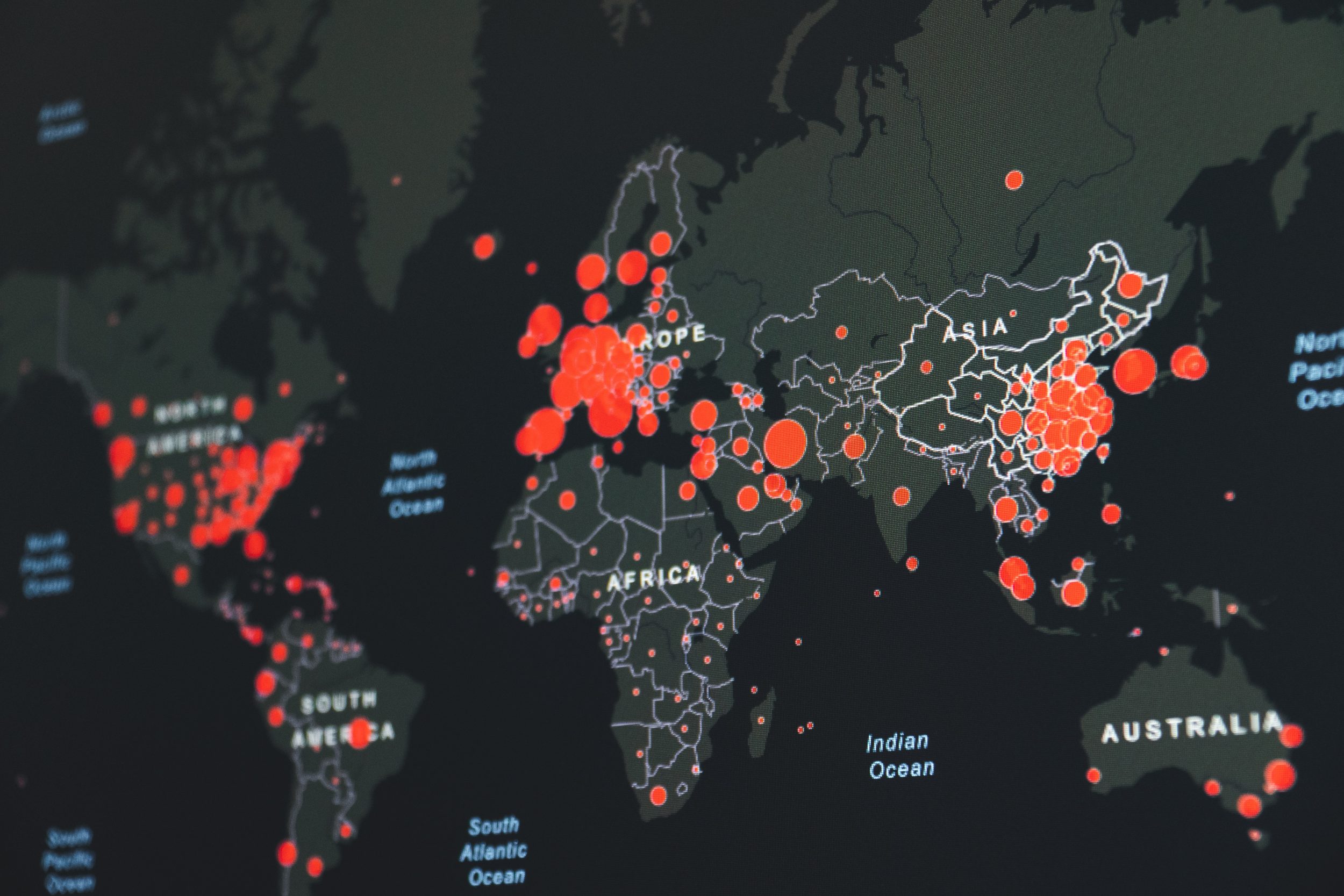 Joseph Turow, Professor of Communication at the Annenberg School for Communication, explores the increasingly important role of data collection and the quantification of the individual in one of our favourite activities – shopping. This post follows a special workshop convened by the Media Policy Project on ‘Automation, Prediction and Digital Inequalities’.
Joseph Turow, Professor of Communication at the Annenberg School for Communication, explores the increasingly important role of data collection and the quantification of the individual in one of our favourite activities – shopping. This post follows a special workshop convened by the Media Policy Project on ‘Automation, Prediction and Digital Inequalities’.
One of the consequences of 20th century modernism has been the rise of the quantified individual in so many aspects of life. Our current age is defined by a numerical focus on the qualities of the individual person, not just demographically, but also behaviourally. The quantified individual perspective is pervasive among today’s academic and business elites, creating a new version of what philosopher Charles Taylor called ‘the social imaginary’ or our common understanding of how the world works and what we consider normal.
When it comes to the public’s acceptance of the quantification of the individual, this dynamic plays out most dramatically in retailing. While the current debate focuses on issues surrounding advertising, privacy and government, what’s happening in the supermarket is often below the radar. Yet shopping is something that we engage in a lot. Retailing stands at the heart of fundamental contemporary shifts in the social imaginary as marketers move the quantified individual framework into everyday life.
To understand this and its implications, we have to look historically, especially at the idea of brand loyalty.
In the US before the 1840s, the dominant retailing paradigm pertained to peddlers and small merchants. Merchants decided what they were going to charge you and which items they would show you, based upon what they thought about you. So, different customers paid different amounts for the same product. Ideas of loyalty came about because if you were loyal to the merchant, the merchant promised a kind of protection (in prices and quality goods) and prestige (being treated well as a customer) to encourage repeat purchases. From the 1840s to the late 19th century, the development of department stores, supermarkets and chain stores brought with them the democratisation of commerce as an ideology. They published set prices and had an open inventory. (In fact, many Quakers ran these businesses, and they considered charging different people different prices to be immoral.) Throughout this period, stores focused on protection – such as through safe packaging – and prestige (for example, belonging to store loyalty stamp programmes) to encourage repeat visits and purchases.
During the past twenty years, this idealisation of commerce as democratic with respect to the goods people see and pay for has begun to erode. The change accelerated as brick-and-mortar retailers were confronted with competition from Amazon and other internet sellers who track individuals online and use predictive analytics to show them tailored arrays of products and prices they believe will yield purchases. Although physical department stores, supermarkets, specialty stores and chain stores are still the centre of the retailing universe – 90% of shopping revenues come from there – retailing executives believe they will succeed only if they figure out how to bring the internet’s tracking possibilities into physical stores. They therefore are restructuring stores and linking them to their websites and apps in order to trace, quantify, profile and discriminate among shoppers as never before in terms of the different products highlighted and the different prices charged (through discounts) for different people. The smartphone is a key vehicle for carrying out these activities.
For stores to survive this transition, shoppers will have to slowly learn to accept, even welcome, those eyes in the aisles as part of their natural environment. And in fact, while policymakers are arguing about surveillance and privacy intrusions by the government and advertisers, in a corner of society rarely mentioned by data policy makers, the retailing industry is working tirelessly to convince Americans to accept the notion that offering up information about themselves is a natural part of life. The very activities that dismay privacy and anti-discrimination advocates are already beginning to become everyday habits in American lives, and part of Americans’ cultural routines. Retailing is at the leading edge of a new hidden curriculum for American society – teaching people what they have to give up in order to get along in the twenty-first century.
Part of retail discrimination is to identify customers deemed to have a relatively high “lifetime value” (a shopper’s lifetime being typically defined as five years). These profitable shoppers receive tailored deals aimed at keeping them coming back. Customers deemed at the lower-valued end of the shopping spectrum typically aren’t treated poorly; they may even get personalised discount offers in the hope that their value to the store might increase. But they will not enjoy anything like the attention and value the loyal customers enjoy. Loyalty programmes are now tailored with these aims in mind. In fact, some retailers adjust loyalty programmes to send a message to customers they conclude have been collecting rewards the merchants feel aren’t warranted by their spending levels.
These monitoring and discrimination activities usually fly under the public’s radar. An exception was a New York Times article discussing [US discount store] Target’s analysis of customer purchase patterns to identify pregnant customers. In the case of one family, a father discovered his teenage daughter’s pregnancy only because the retailer had mailed her a package of pregnancy-related deals. These occasional press accounts no doubt cause at least some concern among those who also worry about contemporary government and corporate surveillance, but this coverage ignores a deeper development. The transformation of retailing is, at the core, a rethinking of the ways merchant-customer relationships should take place in the twenty-first century. Monitoring and discrimination are certainly critical to this rethinking, but they are only part of an accelerating project to redefine relationships with shoppers. Retailers’ strategy is to mix shrewd loyalty programmes, high-tech tracking instruments, and esoteric statistical manipulation with soothing brand images and smoke screens in such a way that shoppers accept systematic biases against them. Merchants ramp up “rewards” regimes (which they internally call “loyalty programmes”) that position store monitoring and discrimination as useful twenty-first-century values. In the process, the retail industry develops ever-evolving technologies to identify desirable prospects, encourage and maintain customer loyalty, and personalise attractive deals for individuals declared winners by the algorithms–and less attractive deals for algorithmic losers.
We are only at the beginning of this new road. Stores are still struggling with how, when, and where to implement their data-driven regimes. The reshaping of retailing will likely add data-driven anxieties to both buying and selling. Stores will become centres of stress as duelling shopper and retailer technologies reach sometimes diverging conclusions about price and preferential treatment. Sellers will have to change prices constantly; introduce new products rapidly; and continually adopt new ways to define, identify, track, re-evaluate, and keep wanted customers. Shoppers, who will continue to experience traditional stress about product quality and cost, will also now feel uneasy about what stores know about them and how the stores score them, and concerned about the impact this information will have on their shopping experience. They will also learn that trying to get on the good side of their favourite merchants means opening spigots to their personal information.
There may be time for concerned parties to guide the retailing transformation with an eye to the public interest. What’s necessary is for people to understand the particulars of what’s taking place so they can object to it. Academics, journalists and advocates have to translate what’s going on for the public. We have to do naming. We have to do praising. We have to do shaming. And we have to have more interest among media scholars about how media are changing retailing so that they can generate creative ideas about how to reshape retailing’s new hidden curriculum towards pro-social goals.
This blog gives the views of the author and does not represent the position of the LSE Media Policy Project blog, nor of the London School of Economics and Political Science. More information on this topic will be available in the author’s upcoming book, The Aisles Have Eyes (Yale University Press, due out in December 2016).
This post was published to coincide with a workshop held in April 2016 by the Media Policy Project, ‘Automation, Prediction and Digital Inequalities’. This was the third of a series of workshops organised throughout 2015 and 2016 by the Media Policy Project as part of a grant from the LSE’s Higher Education Innovation Fund (HEIF5). To read a summary of the workshop, please click here.






1 Comments